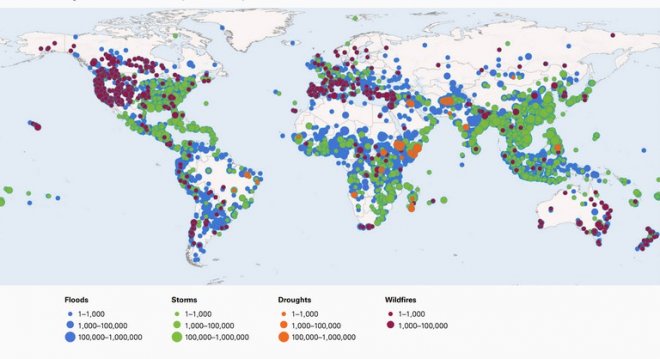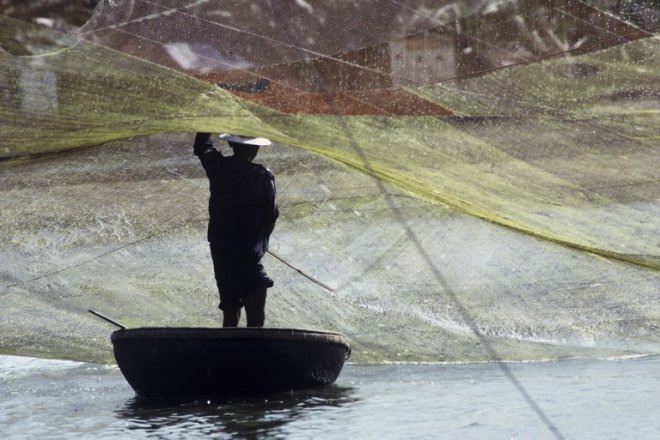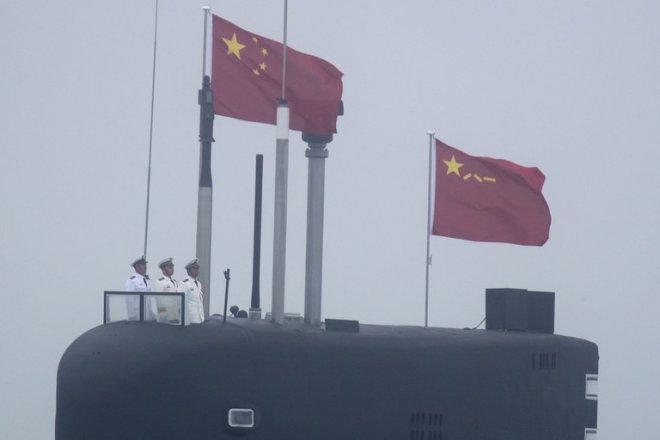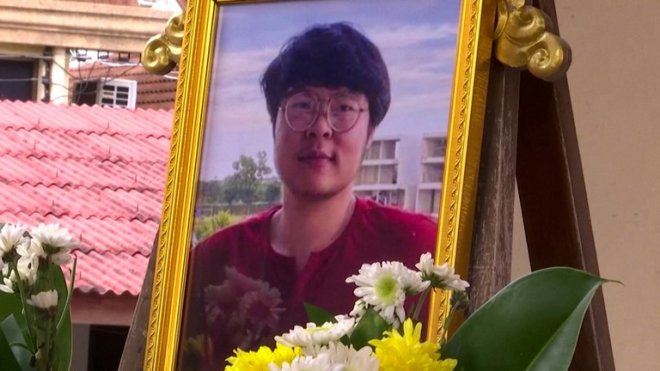Canada launches Indo-Pacific strategy that talks tough on China
U.S. ally Canada has launched its own Indo-Pacific strategy “to advance Canada’s regional peace and security interests” as a Pacific nation, with indications of a tougher stance against China.
Relations between the Canadian and Chinese governments have been strained after Canada arrested Meng Wanzhou, a senior executive at the Chinese telecommunications giant Huawei in 2018 at the request of the U.S.
![]() Huawei Chief Financial Officer Meng Wanzhou (C) at British Columbia Supreme Court after her extradition hearing ended in her favor, in Vancouver, Sept. 24, 2021. CREDIT: AFP
Huawei Chief Financial Officer Meng Wanzhou (C) at British Columbia Supreme Court after her extradition hearing ended in her favor, in Vancouver, Sept. 24, 2021. CREDIT: AFP
The bilateral tensions were exposed recently on the sidelines of the recent Group of 20 Summit in Bali, Indonesia, when Chinese leader Xi Jinping appeared to be criticizing his Canadian counterpart Justin Trudeau over alleged media leaks.
The long-awaited 23-page document said “Canada’s evolving approach to China is a critical part of the Indo-Pacific Strategy,” clearly defining Beijing as “an increasingly disruptive global power.”
China has increasingly disregarded international rules and norms while having had “an enormous impact on the Indo-Pacific” and nurturing “ambitions to become the leading power in the region,” it said.
“Canada’s Indo-Pacific Strategy is informed by its clear-eyed understanding of this global China, and Canada’s approach is aligned with those of our partners in the region and around the world,” the paper said.
The new strategy pledges to push back “against any form of foreign interference on Canadian soil” and strengthen Canada’s cyber security systems, while dedicating more resources to “enhance Canadian competencies on China.”
New investments will be made in order to deepen “our understanding of how China thinks, operates and plans, and how it exerts influence in the region and around the world.”
The document said Ottawa was reviewing all mechanisms and structures, such as Memorandums of Understanding (MOUs) and Dialogues, across all federal departments “to ensure they advance Canada’s national interests.”
![]() Canada"s Prime Minister Justin Trudeau speaks with China"s President Xi Jinping at the G-20 Leaders" Summit in Bali, Indonesia, Nov. 16, 2022. CREDIT: Canada Prime Minister"s Office/Handout via Reuters
Canada"s Prime Minister Justin Trudeau speaks with China"s President Xi Jinping at the G-20 Leaders" Summit in Bali, Indonesia, Nov. 16, 2022. CREDIT: Canada Prime Minister"s Office/Handout via Reuters
Economic interests
Canada began talks on a possible free trade deal with China in 2016 but abandoned plans four years later because Trudeau’s government faced increased domestic criticism for being too lenient and compromising towards Beijing.
The Indo-Pacific is Canada’s second-largest regional export market, after the United States, with annual two-way trade valued at CA$226 billion (U.S.$168 billion).
Over the next five years, Canada will invest nearly CA$2.3 billion (U.S.$1.7 billion) in different initiatives to boost its economic and strategic role in the region, according to the new strategy.
While protecting Canadian market access in China, the new Indo-Pacific Strategy acknowledged the importance of diversifying “within, and beyond, that market.”
The paper identified a number of “key partners” in the Indo-Pacific, including India, the North Pacific (Japan and South Korea), and the ten-nation Southeast Asian bloc ASEAN.
“India’s strategic importance and leadership - both across the region and globally - will only increase,” it said, adding that besides economic cooperation, Canada will seek to bolster ties with India in the fields of security, the promotion of democracy, pluralism and human rights.
Initiatives to foster economic ties with the region include establishing the Canadian Trade Gateway in Southeast Asia and Canada’s first agriculture office in the region.
Security ties
A major part of Ottawa’s new strategy in the Indo-Pacific is to promote Canada’s security interests in the region.
“The strategy will bolster our Canadian armed forces’ presence in the region, and will enhance Canada’s defense and security relationships with partners and allies,” said Canadian Defense Minister Anita Anand.
Canada will put over CA$720 million (U.S.$535.8 million) into new security projects with more than a half of the investment going to “reinforce Canada’s Indo-Pacific naval presence and increase Canadian armed forces’ participation in regional military exercises.”
A third naval frigate will be deployed to the region, according to Canada’s department of national defense.
A new multi-department initiative will also be created “to help develop cyber security capacity in select regional partners.”
The new strategy also pledges to further promote Canada’s long-standing collaboration with, and contribution to, the Five Eyes – the intelligence alliance comprising Australia, Canada, New Zealand, the United Kingdom, and the United States.
The Canadian government said it will continue to work with partners “to push back against any unilateral actions that threaten the status quo in the Taiwan Strait, as well as the East and South China Seas.”
Since 2021, Canadian warships have taken part in some U.S.-led Taiwan Strait transits that China denounced as “provocative.”
Beijing considers Taiwan a Chinese province and the Taiwan issue the “core of China"s core interests” and an “insurmountable” red line that should not be crossed.
China has yet to respond to the newly-launched strategy but Canada’s increased military presence will no doubt provoke criticism from Beijing and risk leading to confrontations, even conflicts.
Canadian aircraft taking part in U.N. missions in the region have been dangerously intercepted by Chinese warplanes on numerous occasions.
Since December last year Ottawa has reportedly lodged “multiple” diplomatic complaints with Beijing for what it called the “unsafe and unprofessional conduct” of the Chinese pilots who “buzzed” Canadian airplanes.
“Buzzing” means flying extremely close and fast, risking a mid-air collision.
[圖擷取自網路,如有疑問請私訊]
Relations between the Canadian and Chinese governments have been strained after Canada arrested Meng Wanzhou, a senior executive at the Chinese telecommunications giant Huawei in 2018 at the request of the U.S.
 Huawei Chief Financial Officer Meng Wanzhou (C) at British Columbia Supreme Court after her extradition hearing ended in her favor, in Vancouver, Sept. 24, 2021. CREDIT: AFP
Huawei Chief Financial Officer Meng Wanzhou (C) at British Columbia Supreme Court after her extradition hearing ended in her favor, in Vancouver, Sept. 24, 2021. CREDIT: AFPThe bilateral tensions were exposed recently on the sidelines of the recent Group of 20 Summit in Bali, Indonesia, when Chinese leader Xi Jinping appeared to be criticizing his Canadian counterpart Justin Trudeau over alleged media leaks.
The long-awaited 23-page document said “Canada’s evolving approach to China is a critical part of the Indo-Pacific Strategy,” clearly defining Beijing as “an increasingly disruptive global power.”
China has increasingly disregarded international rules and norms while having had “an enormous impact on the Indo-Pacific” and nurturing “ambitions to become the leading power in the region,” it said.
“Canada’s Indo-Pacific Strategy is informed by its clear-eyed understanding of this global China, and Canada’s approach is aligned with those of our partners in the region and around the world,” the paper said.
The new strategy pledges to push back “against any form of foreign interference on Canadian soil” and strengthen Canada’s cyber security systems, while dedicating more resources to “enhance Canadian competencies on China.”
New investments will be made in order to deepen “our understanding of how China thinks, operates and plans, and how it exerts influence in the region and around the world.”
The document said Ottawa was reviewing all mechanisms and structures, such as Memorandums of Understanding (MOUs) and Dialogues, across all federal departments “to ensure they advance Canada’s national interests.”
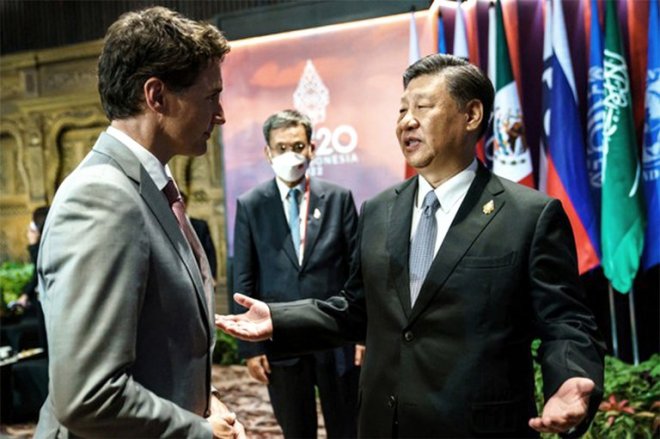 Canada"s Prime Minister Justin Trudeau speaks with China"s President Xi Jinping at the G-20 Leaders" Summit in Bali, Indonesia, Nov. 16, 2022. CREDIT: Canada Prime Minister"s Office/Handout via Reuters
Canada"s Prime Minister Justin Trudeau speaks with China"s President Xi Jinping at the G-20 Leaders" Summit in Bali, Indonesia, Nov. 16, 2022. CREDIT: Canada Prime Minister"s Office/Handout via ReutersEconomic interests
Canada began talks on a possible free trade deal with China in 2016 but abandoned plans four years later because Trudeau’s government faced increased domestic criticism for being too lenient and compromising towards Beijing.
The Indo-Pacific is Canada’s second-largest regional export market, after the United States, with annual two-way trade valued at CA$226 billion (U.S.$168 billion).
Over the next five years, Canada will invest nearly CA$2.3 billion (U.S.$1.7 billion) in different initiatives to boost its economic and strategic role in the region, according to the new strategy.
While protecting Canadian market access in China, the new Indo-Pacific Strategy acknowledged the importance of diversifying “within, and beyond, that market.”
The paper identified a number of “key partners” in the Indo-Pacific, including India, the North Pacific (Japan and South Korea), and the ten-nation Southeast Asian bloc ASEAN.
“India’s strategic importance and leadership - both across the region and globally - will only increase,” it said, adding that besides economic cooperation, Canada will seek to bolster ties with India in the fields of security, the promotion of democracy, pluralism and human rights.
Initiatives to foster economic ties with the region include establishing the Canadian Trade Gateway in Southeast Asia and Canada’s first agriculture office in the region.
Security ties
A major part of Ottawa’s new strategy in the Indo-Pacific is to promote Canada’s security interests in the region.
“The strategy will bolster our Canadian armed forces’ presence in the region, and will enhance Canada’s defense and security relationships with partners and allies,” said Canadian Defense Minister Anita Anand.
Canada will put over CA$720 million (U.S.$535.8 million) into new security projects with more than a half of the investment going to “reinforce Canada’s Indo-Pacific naval presence and increase Canadian armed forces’ participation in regional military exercises.”
A third naval frigate will be deployed to the region, according to Canada’s department of national defense.
A new multi-department initiative will also be created “to help develop cyber security capacity in select regional partners.”
The new strategy also pledges to further promote Canada’s long-standing collaboration with, and contribution to, the Five Eyes – the intelligence alliance comprising Australia, Canada, New Zealand, the United Kingdom, and the United States.
The Canadian government said it will continue to work with partners “to push back against any unilateral actions that threaten the status quo in the Taiwan Strait, as well as the East and South China Seas.”
Since 2021, Canadian warships have taken part in some U.S.-led Taiwan Strait transits that China denounced as “provocative.”
Beijing considers Taiwan a Chinese province and the Taiwan issue the “core of China"s core interests” and an “insurmountable” red line that should not be crossed.
China has yet to respond to the newly-launched strategy but Canada’s increased military presence will no doubt provoke criticism from Beijing and risk leading to confrontations, even conflicts.
Canadian aircraft taking part in U.N. missions in the region have been dangerously intercepted by Chinese warplanes on numerous occasions.
Since December last year Ottawa has reportedly lodged “multiple” diplomatic complaints with Beijing for what it called the “unsafe and unprofessional conduct” of the Chinese pilots who “buzzed” Canadian airplanes.
“Buzzing” means flying extremely close and fast, risking a mid-air collision.
[圖擷取自網路,如有疑問請私訊]
|
本篇 |
不想錯過? 請追蹤FB專頁! |
| 喜歡這篇嗎?快分享吧! |
相關文章
AsianNewsCast









